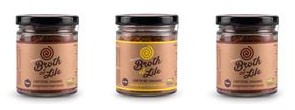Offer
Provide additional details about the offer you're running.
Provide additional details about the offer you're running.
Provide additional details about the offer you're running.

After 26 years in consumers' lives, the Heart Foundation Tick System has finally been given the boot. It was a system with good intentions when it started out and encouraged healthier diets among Australians. It was introduced to rate the quality of packaged foods and help us make healthier dietary choices. There were pluses and minuses to the system, which will soon be replaced by a new star rating system.
One of the misuses and biggest concerns about the system was that food manufacturers had to pay for the privilege. Ticks were not given out willy-nilly, food companies did have to apply to be considered. They were then evaluated and once approved, had to pay for their tick. In an ideal world, this sort of rating would not come at a charge due to the nature of the business, but it unfortunately wasn't so. While it has been argued that companies couldn't buy a tick and that the fees they paid simply funded the program, much debate surrounds the matter.
Why? Well! When foods like McDonalds chicken nuggets, Honey Cheerios and Milo are endorsed, we can't help but be just a little bit suss.
While the tick system clearly became questionable to consumers over the years, it also did some great things throughout its lifespan. Prior to its 1989 launch, packaged foods didn't have any requirements or guidelines to say that nutritional values should be displayed on packaging. Foods that received the tick, were therefore some of the first to display nutritional information panel. In this respect, the tick system was a brilliant thing. It got us thinking more about what was going into our bodies. The population became more conscious of maintaining a healthy diet and of the effects an unhealthy diet could have on us and on those we loved.
For those who were not super keen on getting into the finer details, the tick system made choosing healthier option easy. The system was also often praised for helping to reduce unhealthy trans-fat levels in products like margarines.
Not all bad, it would seem! But really, it depends which way you look at it. If we eat as naturally as possible, we can avoid the fatty, sugary, trans-fatty, salty, additive conundrum almost entirely. Conscious, responsible food consumption is becoming increasingly more popular. It's a wonderful thing to see people not only caring about what is going into their bodies, but also caring about how the animals, who ultimately become much of that food, are treated in their own lives.
So, while it's a great thing that the tick system has evolved and is hopefully being replaced by something better, we, as a society are now much better equipped with the knowledge of what we should and shouldn't eat. We don't really need a system to tell us what we should and shouldn't eat anymore, do we?
When shopping, my general rule is if you're not 100% sure on the ingredients, don't buy it, don't eat it and by God, don't give it to your kids. If you are confident that the packaged food you are buying is certified organic and free of any nasties, then you, my friend, are on the right track. A healthy diet is the first strong step toward becoming the healthiest version of yourself. Why should we have to rely on a system of unreliable icons on our food to achieve that? Instead, let's empower ourselves and rely on our own knowledge and judgment.
Ready to get serious about your health?
Join 30,000 others for free health articles and special offers.
Broth of Life acknowledges Aboriginal and Torres Strait Islander First Nations as the traditional custodians of Australia.We recognise their continuing connection to land, waters and culture. We pay our respects to their Elders past, present and emerging.
